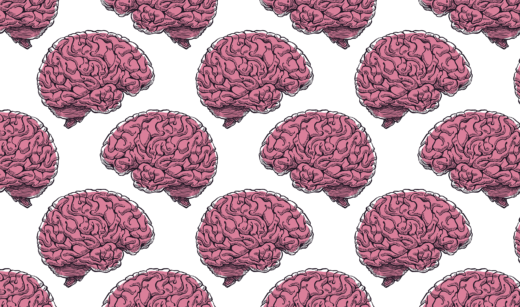ISSUE #1: Phonemic Awareness — identifying individual units of sound is a major challenge in the dyslexic brain. There are 44 sounds, or phonemes, in the English language. The main problem for kids with dyslexia is the ability to notice and work with all the sounds, and then be able to match those sounds to the right letters. In younger children, this is why not being able to rhyme words is an important early sign of dyslexia—often dyslexic kids don’t recognize the ways two rhyming words sound alike. English is an irregular language so there are many different combinations of letters that match to phonemes, making reading and spelling really hard for kids with challenges working with and remembering speech sounds.
ISSUE #2: Fluency, or getting the reading circuit to work together quickly, is the second-biggest issue. Even when children can process all the phonemes, they can still have trouble associating the sounds with the right letters, perhaps due to the right hemisphere’s control over the left hemisphere-centered language processing. This makes reading even the simplest words very slow, and then automaticity doesn’t develop properly.
ISSUE #3: Comprehension is the third (but no less crucial) issue in reading. Once letters and sounds are matched together, some children will have trouble putting the words together to form sentences and meaning. Often, this kind of dyslexia doesn’t show up until children are older, around third grade and up, when there is a switch from learning to read to reading to learn.
For dyslexics, the work of reading is slow and laborious, so often otherwise bright and intelligent students who haven’t received proper intervention never become fluent readers. Many dyslexic students can get by for years by memorizing words without actually reading them, but by the third or fourth grade, when learning switches from learning to read to reading to learn, struggling students can’t read fast enough to keep up. They often experience repeated failure.
Yet, with explicit and systematic specialized instruction specifically for the different brain structure, the reading circuit can be re-trained to work toward fluidity. But first, students, parents, and teachers must understand that the dyslexic’s brain isn’t “broken” or deficient, just organized in a different way.
DO DYSLEXICS HAVE SPECIAL TALENTS?
Special gifts and talents can emerge from dyslexic brains, and whether this happens because of the unique setup of the dyslexic brain or in spite of it continues to be an ongoing subject of research and discussion.
Dyslexics quickly learn that very successful people, some considered geniuses in their field, like Pablo Picasso, Thomas Edison, Steven Spielberg, Octavia Spencer, Erin Brockovich and Nobel Prize-winner Elizabeth Blackburn, also struggled to read and write, and it didn’t affect their ability to achieve.
Does the dyslexic brain connote certain talents or even an advantage over a more typical reading brain? Some experts and writers like Malcolm Gladwell even call dyslexia an advantage or a desirable disadvantage—a disadvantage that ends up being at least partly responsible for a person’s success.
But the research behind whether or not dyslexia is an actual advantage, or whether special talents emerge from dyslexic brains, is complex—it’s difficult to tease out causes and correlations.
“It’s certainly possible that some dyslexics have special abilities in areas not related to reading, just as other kids could have special abilities in one or two areas but struggle in other areas,” says research scientist and speech-language pathologist Peggy McCardle, former branch chief at the Eunice Kennedy Shriver National Institute of Child Health and Human Development (NICHD), U.S. National Institutes of Health.
“We know that there are gifted children in the world, and that some of them are dyslexic. What we don’t know —and to date there is no real evidence of this—is whether the dyslexia and the giftedness or talent are connected, or just happened to co-occur in that person. People are looking at ways to study that, with good research designs and solid methods, but so far it has not been done.”
A FINE LINE
For practitioners who work with dyslexic students, it’s often a fine line between encouraging students to use their nonreading talents to succeed, and for not short-changing themselves on what they are able to do.
Dr. Sheryl Rimrodt-Frierson, who runs the pediatric clinic at the Vanderbilt Kennedy Center Reading Clinic, says that reading and writing are still vital skills that need to be addressed, and she’s cautious about dyslexic kids selling themselves short when it comes to academic work. “I will make sure they know there are plenty of good people out there who have done plenty—academic work, medical school, law school.” Rimrodt-Frierson says that kids need to understand there is a world of possibilities.
As cognitive neuroscientist Maryanne Wolf writes in her book Proust and the Squid, “The single most important implication of research in dyslexia is not ensuring that we don’t derail the development of a future Leonardo or Edison; it is making sure that we do not miss the potential of any child. Not all children with dyslexia have extraordinary talents, but every one of them has a unique potential that all too often goes unrealized because we don’t know how to tap it.”


